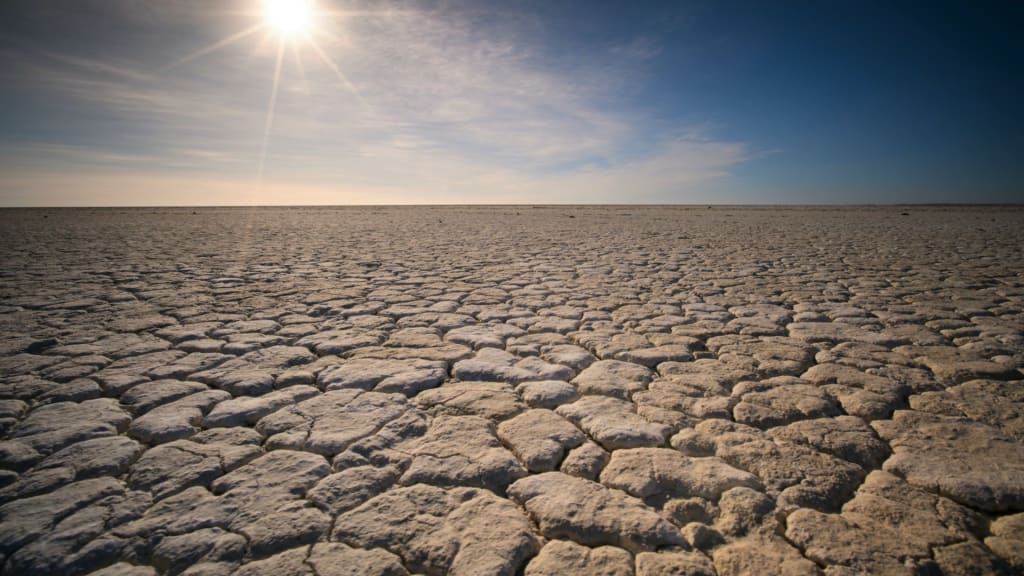How to Use the Microbes to Protect Crops From Drought?
Imagine if we could use microbes into plant food or soil like a secret ingredient to the droughts

Climate change is threatening every aspect of our lives, including what we eat. Droughts in particular are looking like they will be a major threat to our food supply, especially since crops such as maize, wheat and rice are particularly vulnerable to dry weather. Which is why researchers have been trying to make plants more drought resistant for decades, using high-tech approaches like genetic modification. And while they have been somewhat successful, genetically modified plants are not the only way to tackle this problem. It is a simple solution that might have been right under our hands this whole time, the soil-dwelling microbes that make up a plant's microbiome.
Anyone who's forgetful about watering their plants already knows the damage drought can do. And this damage doesn't disappear when the water comes back. While some molecular, structural, and physiological changes caused by drought go back to normal once the rain comes, in many cases those changes cause physical damage that can't be fixed. So even a short-term drought can have long-term consequences.
When there's a drought, plants can't get the food they need from the ground. They start looking sad - their leaves get small, they can't grow properly, and they taste bad. So, even if the drought only lasts for one season, it can affect our food supply for a long time. We're already struggling to feed more and more people, and because of climate change, droughts are happening more often and getting worse. This means we'll have to find ways to feed everyone with less food. And this problem is starting to show up now.
In Europe, super-hot weather and droughts have made it so that we can't harvest about three times as much grain as we used to over the past 60 years. That's a big problem! And in developing countries in hot areas, like Africa and Southern Asia, it's even worse. They think that wheat, one of the main foods, will drop by 15% by 2050. So, scientists have been trying to figure out how to help plants survive droughts for a long time. Some plants have tricks up their sleeves to handle dry times, and scientists have been tinkering with their genes to make them even better at it. But here's the surprise: it's not just the plant's genes that can save the day. It's also the tiny neighbors that live around them.
Think of microbiomes as bustling communities of tiny creatures, like bacteria, fungi, and algae, that call an ecosystem their home. You might have heard of the human microbiome, but guess what? Plants have their own microbiomes too! These special microbial communities hang out both inside and outside the plant, as well as in the soil around the plant's roots. It's like a whole hidden world of microbe buddies helping out our green friends.
These little microbes make plants grow better, turn nitrogen into plant food, and gobble up nutrients to share with their plant pals. But here's the cool part: some of these microbe friends can also release special molecules that help plants fight droughts. Imagine some of these bacteria as growth coaches for plants.
They change how plants grow by messing with their energy, making photosynthesis (the plant's food-making process) better, and boosting their defenses. Other bacteria act like plant cheerleaders by making sure the plant doesn't stress out too much. And some microbes are like construction workers, building protective shields around the plant's roots to keep them from losing water. It's teamwork, microbe-style!
You might imagine that these microbes are like super helpers for plants all the time, but that's not quite true. When things are normal and comfy for plants, these microbes don't do much to boost plant growth or make more crops. They only jump into action when droughts come along. Also, not all plants have these special microbe buddies.
The scientists are trying to find ways to use these helpful microbes more regularly, especially for the plants we eat. They want to make sure plants always have these microbe pals to fight off droughts and grow strong.
In 2017, scientists in China did a pretty cool experiment. They took some bacteria from a desert plant, which you'd think would know all about dealing with droughts. Then, they put these bacteria into the soil where they were growing wheat. They gave the bacteria a few days to settle in and become friends with the wheat plants.
After that, they played a little trick on the wheat plants. They didn't give them any water for a whole week, pretending it was a drought. But guess what happened? The wheat plants with these special bacteria didn't get all sad and droopy like the others. Nope! They had fewer curled leaves, longer roots and shoots, more green stuff called chlorophyll, and more sweet sugars inside them.
The scientists thought this was proof that the bacteria were like plant boosters, helping the wheat plants grow better and handle the dry spell. It's like the bacteria gave the wheat plants a secret superpower for surviving droughts!
In 2015, scientists in Milan did a cool experiment with pepper plants. They introduced some bacteria from grapevines to these pepper plants, and guess what? The peppers grow healthier!
Now, we're not ready to use these tiny microbe helpers everywhere just yet, but it's an excellent idea. Imagine if we could mix these helpful microbes into plant food or soil like a secret ingredient.






Comments
There are no comments for this story
Be the first to respond and start the conversation.